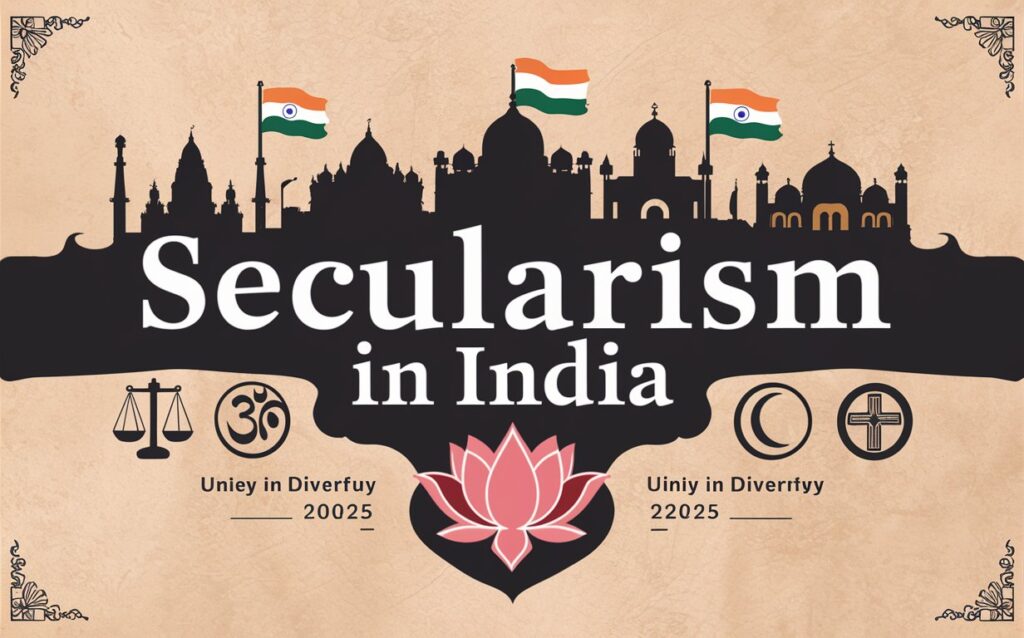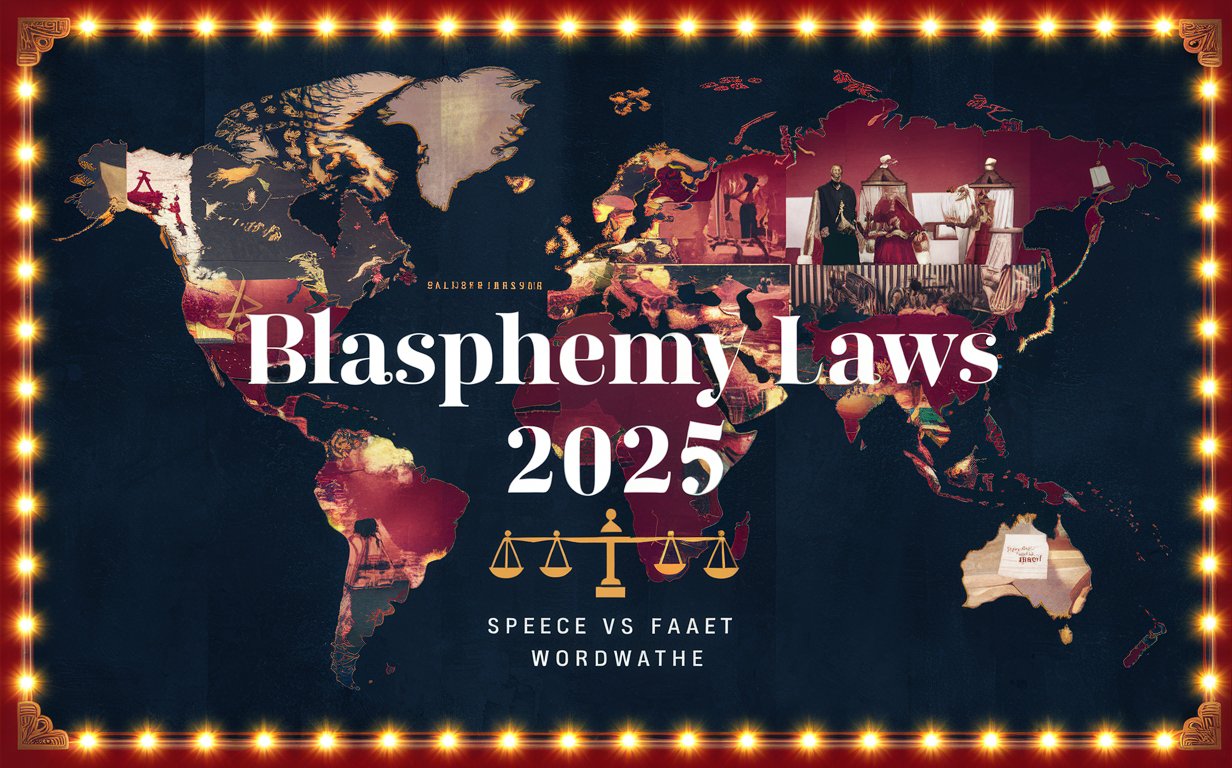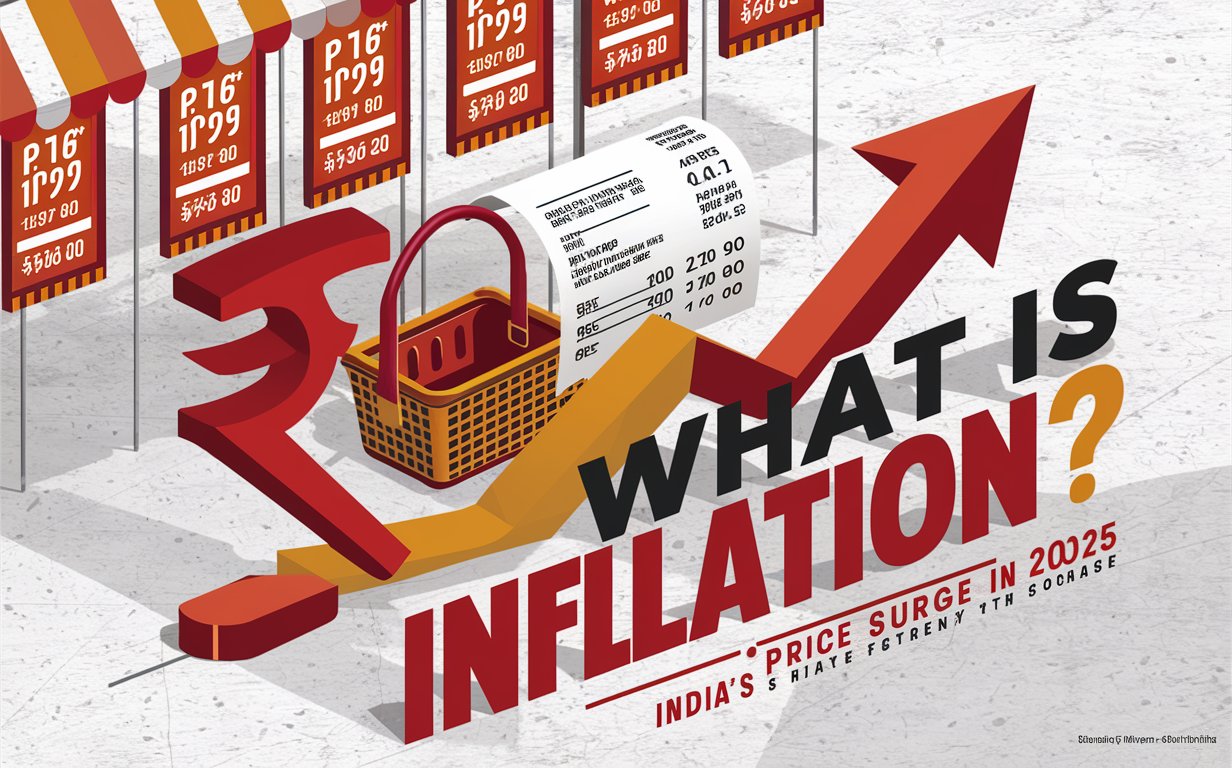🕌 What Is Secularism in India? Understanding Its Meaning, History, and Role in 2025
Secularism in India is a foundational principle enshrined in the Constitution, ensuring that the state maintains neutrality toward all religions. But in 2025, as socio-political debates intensify, understanding secularism has never been more crucial for Indian citizens.
It is not just a concept—it is the glue holding together a nation of over 1.4 billion people, speaking 122 languages and practicing every major world religion.

📜 The Constitutional Basis of Secularism in India
India’s secular ethos was formalized through the 42nd Amendment Act of 1976, which added the word “secular” to the Preamble of the Constitution.
But even before that:
- Articles 25 to 28 guaranteed freedom of religion
- Article 14 promised equality before the law
- Article 15 prohibited religious discrimination
Unlike Western secularism (which demands a strict separation between church and state), Indian secularism means equal respect and protection for all religions.
🏛️ How Secularism Functions in Indian Democracy
In India, secularism operates on a principle of positive engagement, not exclusion:
- State-run schools may teach about all religions but cannot promote one
- Public holidays include major festivals from Hinduism, Islam, Christianity, Sikhism, Buddhism, and Jainism
- Government funds may be used for religious pilgrimage welfare (e.g., Haj subsidy, Char Dham road project)
- Personal laws are allowed for different communities (e.g., Muslim Personal Law Board)
This model aims to balance pluralism with unity.
🧩 Secularism vs. Communalism: India’s Struggle
Despite its constitutional commitment, India has often seen:
- Religious riots and mob violence
- Accusations of minority appeasement or majoritarianism
- Debates over Uniform Civil Code and religious conversions
Events like the Babri Masjid demolition (1992) and the Delhi riots (2020) have raised questions on whether state machinery can remain neutral.
In 2025, controversies around religious symbols in public spaces and political speeches continue to test secularism’s strength.
⚖️ Judiciary’s Stand on Secularism
The Supreme Court of India has consistently defended secular values:
- S.R. Bommai vs. Union of India (1994): Declared secularism a basic feature of the Constitution
- Bijoe Emmanuel Case (1986): Protected students who refused to sing the national anthem on religious grounds
- Triple Talaq Verdict (2017): Upheld gender justice while respecting religious sensitivity
In 2025, the judiciary remains the final guardian of secularism, amid legislative challenges and political polarization.
🌐 Secularism in Global and Indian Context
Indian secularism differs from:
- France’s laïcité: Which bans religious expression in public institutions
- U.S. separation model: Which strictly divides church and state
- Pakistan’s theocratic model: Which grants religion primacy in law
India’s model is pluralist, aiming for religious co-existence, not marginalization.
📚 Role of Education and Media in Promoting Secular Values
In 2025, India’s educational system includes:
- Civics and moral science curriculum emphasizing secular ideals
- CBSE and NCERT textbooks highlighting unity in diversity
- Awareness drives promoting interfaith dialogue and communal harmony
However, biased media narratives and social media hate speech remain challenges that dilute secular consciousness.
📌 Conclusion: Secularism Is the Soul of Indian Democracy
Secularism in India is not just about law—it’s about lived reality. In a nation as diverse and complex as India, secularism ensures coexistence, dignity, and peace. As debates rage on in 2025, this principle must be protected—not just by courts or governments—but by every citizen who believes in unity beyond religion.
DoFollow External Links:
Internal Links:



Post Comment